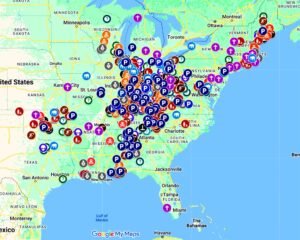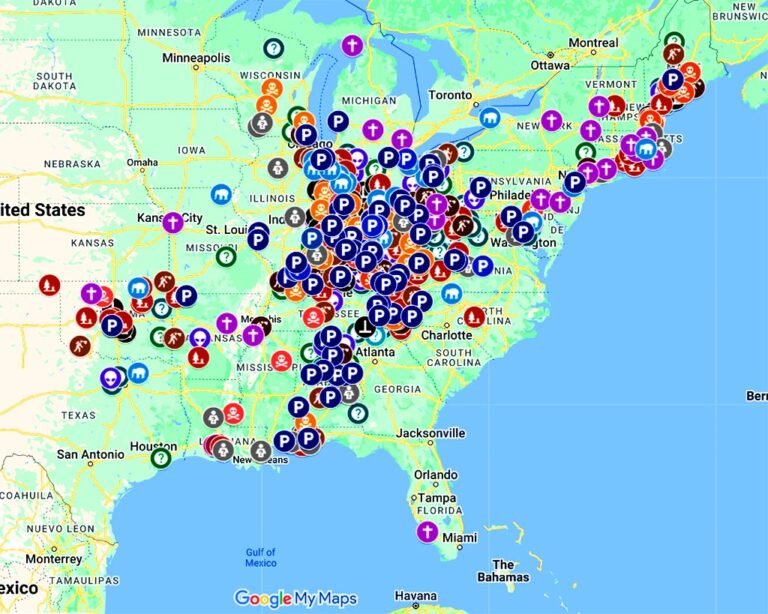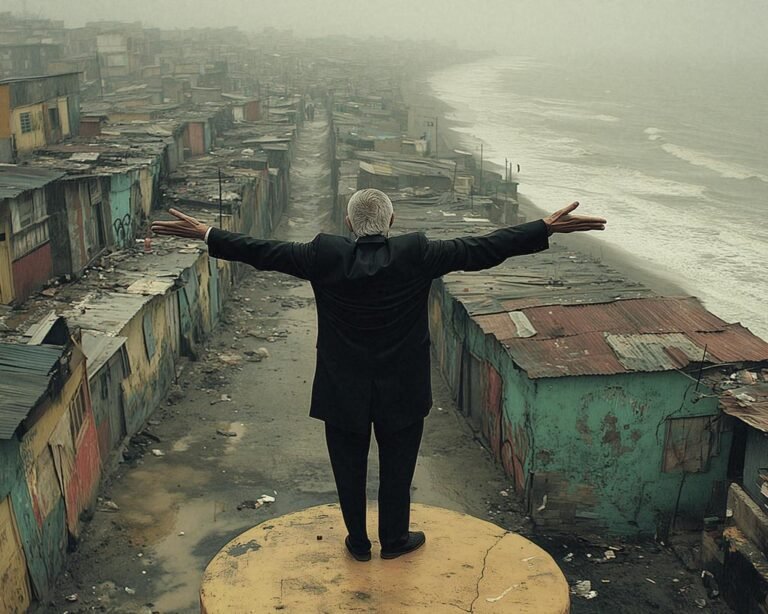Chutes and Ladders with No Winners
The poverty-to-homelessness pipeline represents the complex and interconnected factors that push individuals and families from a state of economic hardship (poverty) towards a lack of stable housing (homelessness). This framework is often depicted as a treacherous game of Chutes and Ladders, where economic instability, lack of affordable housing, and inadequate support systems act as “chutes,” plunging people deeper into hardship, while access to resources, social support, and opportunities for upward mobility represent the “ladders” that help individuals climb out of poverty and avoid homelessness.
Imagine a giant, life-sized game of Chutes and Ladders, but instead of colorful squares and cheerful illustrations, the board is a stark representation of the harsh realities of poverty. The ladders are few and far between, rickety and difficult to climb, while the chutes are plentiful, gaping wide and ready to swallow anyone who falters. This isn’t a game of chance; it’s a rigged system where the odds are stacked against those who start at the bottom.
Welcome to the poverty-to-homelessness pipeline, a treacherous path where every roll of the dice can have life-altering consequences. This is the story of millions of Americans who live on the edge of financial precarity, facing a system that often pushes them closer to the brink rather than offering a helping hand.
Did you know?
Nearly 40 million people in the United States live below the poverty line? [1] That’s like the entire population of California living with the constant stress of not knowing where their next meal will come from or how they’ll keep a roof over their heads.
It’s a stark reminder that poverty is not an abstract concept; it’s a lived experience for millions of individuals and families, and it’s often just one unexpected expense, a medical crisis, a job loss, or a rent increase away from homelessness.
This article dissects the poverty-to-homelessness pipeline, exposing the forces that propel people down the chutes and illuminating the strategies and resources that can help build stronger ladders of opportunity. We’ll dive into the economic factors, the social costs, the individual and systemic challenges, and the urgent need for solutions that break the cycle of poverty and create a more equitable society.
The poverty-to-homelessness pipeline in America is a complex and interconnected web of economic hardship, inadequate social safety nets, and systemic barriers, requiring a multifaceted approach that addresses root causes, provides comprehensive support systems, and empowers individuals with opportunities for upward mobility to effectively combat homelessness and create a more just and equitable society.
The Precarious Path: Understanding the Poverty-to-Homelessness Pipeline
Navigating poverty is like walking a tightrope—one misstep, one unforeseen obstacle, can send you tumbling down a chute of financial insecurity, leading to housing instability and ultimately, the potential for homelessness.
Let’s examine the key elements that contribute to this precarious journey:
- Economic Instability: Low wages, stagnant incomes, limited job opportunities, and a lack of financial literacy create a foundation of vulnerability for millions of Americans. The rise of the gig economy, while offering flexibility, often lacks stability and benefits, leaving workers more exposed to economic shocks. [2]
- Inadequate Social Safety Nets: Social safety net programs, designed to provide a cushion for those facing economic hardship, are often insufficient, inaccessible, or stigmatized, making it challenging for individuals to get the help they need when they need it most. Cuts to funding, bureaucratic hurdles, and strict eligibility criteria create barriers for those who are struggling. [3]
- Rising Costs of Living: The ever-increasing cost of essential needs like housing, healthcare, food, and transportation places immense pressure on families living on the edge of poverty. Wages haven’t kept pace with inflation, making it increasingly difficult for families to make ends meet. [4]
- Lack of Affordable Housing: A severe shortage of affordable housing across the nation leaves low-income families with limited options. Long waitlists for public housing, discrimination in the rental market, and rising rents create a perfect storm of challenges for families struggling to keep a roof over their heads. [5]
- Healthcare Costs and Medical Debt: A medical emergency can send a family struggling with poverty spiraling into financial ruin. High healthcare costs, lack of affordable health insurance, and predatory medical debt collection practices create a chute towards economic instability and potentially, homelessness. [6]
- Education and Skills Gaps: Limited access to quality education and job training opportunities can trap individuals in a cycle of low-wage jobs with limited upward mobility, exacerbating poverty and hindering long-term financial security. [7]
- Systemic Barriers: Discrimination based on race, ethnicity, gender identity, or sexual orientation can create barriers to employment, housing, and access to resources, further marginalizing already vulnerable populations and contributing to the cycle of poverty. [8]
Beyond Statistics: The Human Faces of the Poverty-to-Homelessness Pipeline
The poverty-to-homelessness pipeline is not just an abstract concept; it’s a lived experience for millions of individuals and families, each with their own story, struggles, and dreams for a better future.
- The Single Mother Working Two Jobs: Imagine a mother, juggling multiple low-wage jobs, struggling to afford childcare, food, and rent, constantly worried about how she’ll make ends meet and provide for her children. The lack of affordable housing and a living wage create a constant uphill battle, with the threat of eviction looming large.
- Fun Fact: Did you know that nearly one in four single mothers in the United States live below the poverty line? [9]
- The Senior Citizen on a Fixed Income: Picture a senior citizen, living on a fixed income, facing rising rents, and struggling to afford medication and other essential needs. They may have worked hard their entire lives, only to find themselves in precarious housing situations as they age, unable to keep up with the rising costs of living.
- The Individual with a Disability: Imagine someone living with a disability, facing discrimination in the workplace, limited job opportunities, and difficulty accessing affordable, accessible housing. The social safety net for individuals with disabilities can be fragmented and inadequate, leaving them vulnerable to poverty and homelessness.
- The Veteran Returning from Service: Picture a veteran, returning home after serving their country, struggling to reintegrate into civilian life, finding employment, or accessing the mental health care and support services they need. Untreated PTSD, traumatic brain injuries, or other service-related disabilities can increase the risk of homelessness among veterans.
- The Family Experiencing Homelessness for the First Time: Imagine a family, forced into homelessness due to an unexpected job loss, a medical emergency, or a domestic violence situation, suddenly finding themselves navigating shelters, food banks, and the overwhelming stress of uncertainty. The trauma of homelessness can have a lasting impact on children and families, disrupting their education, social networks, and sense of stability.
Crafting a Path Towards Lasting Change
The poverty-to-homelessness pipeline is a complex and multi-layered challenge that demands comprehensive, long-term solutions. Here’s a roadmap for building those stronger ladders:
- Increasing the Minimum Wage and Promoting Living Wages: Ensuring that everyone who works full-time can afford basic necessities like housing and food is essential for reducing poverty and preventing homelessness. Raising the minimum wage to a living wage level can make a significant difference in the lives of low-wage workers. [10]
- Expanding Affordable Housing Options: Creating and preserving affordable housing through government subsidies, tax incentives, and zoning reforms is crucial for ensuring that low-income families have access to safe and stable housing options. This includes supporting the development of mixed-income communities and preventing displacement of existing residents. [11]
- Strengthening Social Safety Nets: Expanding access to social programs like SNAP (food stamps), TANF (Temporary Assistance for Needy Families), Medicaid, and housing assistance programs can provide a lifeline for families facing financial hardship, preventing them from falling into deeper poverty and homelessness. [12]
- Investing in Education and Job Training: Providing quality education and training opportunities can equip individuals with the skills they need to secure better-paying jobs and build a more stable future. This includes early childhood education programs, vocational training, and pathways to higher education. [13]
- Improving Access to Affordable Healthcare: Expanding access to affordable healthcare through programs like Medicaid and the Affordable Care Act can prevent medical debt from driving families into poverty and homelessness. Providing mental health and addiction services is also essential for supporting individuals struggling with these conditions. [14]
- Addressing Systemic Barriers: Combating discrimination in employment, housing, and access to services is crucial for creating a more equitable playing field and breaking the cycle of poverty that disproportionately affects marginalized communities. This includes promoting fair housing policies, enacting stronger anti-discrimination laws, and addressing implicit biases. [15]
- Promoting Financial Literacy: Providing financial education and counseling can empower individuals with the skills and knowledge they need to manage their finances, build savings, and avoid predatory lending practices. [16]
Unique Challenges
- Funding Constraints: Securing adequate funding for social programs, affordable housing initiatives, and job training programs requires a commitment from policymakers and public support for social investments. The political climate surrounding these issues can be challenging.
- Political Will: Creating lasting change requires political will and the support of elected officials who prioritize addressing poverty and homelessness as critical social issues.
- Public Perceptions: Changing public perceptions about poverty and homelessness, combating stereotypes, and fostering empathy and understanding are crucial for building support for effective solutions.
- Systemic Barriers: Addressing systemic racism, discrimination, and institutional barriers that perpetuate inequality requires a commitment to social justice and a willingness to dismantle structures that privilege some while disadvantaging others.
- Complexity and Interconnectedness: The poverty-to-homelessness pipeline is a complex and multifaceted issue, requiring solutions that address interconnected factors and acknowledge the intersectionality of challenges faced by those at risk.
What now?
The poverty-to-homelessness pipeline is not an inevitable path; it’s a societal creation, shaped by policies, economic forces, and societal choices. It’s a testament to the fact that we can, and must, do better.
We’ve explored the treacherous game board of poverty, the chutes that propel individuals towards homelessness, and the fragile ladders that offer a path towards stability. The evidence is clear: investing in prevention, strengthening safety nets, and creating opportunities for upward mobility is not just the right thing to do, it’s the smart thing to do.
Ignoring the problem, or relying on band-aid solutions, only perpetuates the cycle of poverty and homelessness, burdening our communities with social and economic costs. The time for action is now. Let’s demand solutions that address root causes, empower individuals, and create a society where everyone has the opportunity to not just survive, but to thrive.
The game is rigged, but we can rewrite the rules. Let’s build those stronger ladders, one step at a time, until the poverty-to-homelessness pipeline becomes a pathway to opportunity, hope, and a brighter future for all.
Key Takeaways
- Precarious Poverty: Life on the edge of poverty is precarious, with low wages, inadequate safety nets, and rising costs creating vulnerability. One unexpected event can trigger a downward spiral.
- Systemic Inequality: Systemic barriers like discrimination, limited education access, and healthcare disparities disproportionately impact marginalized communities, perpetuating poverty and homelessness.
- Breaking the Cycle: The journey from poverty to homelessness is not predetermined. Interventions, robust safety nets, and equitable opportunities can help individuals climb out of poverty and achieve stability.
- Solutions as Investments: Investing in solutions like affordable housing, living wages, accessible healthcare, quality education, and social services improves lives, strengthens communities, and reduces social and economic costs.
- Humanizing the Statistics: Challenging stereotypes and recognizing the individual stories behind the numbers fosters empathy and support for effective solutions.
- Prioritizing Prevention: Upstream interventions like early childhood education, job training, and affordable housing initiatives can prevent people from entering the pipeline in the first place.
- Collaboration for Change: Addressing this complex challenge demands collaboration between government, non-profits, businesses, communities, and individuals, working together to create a society where everyone can thrive.
- The Urgency of Action: Delaying action has consequences for individuals and families facing the realities of the pipeline every day. Let’s create a society where everyone has a chance to achieve economic security and a place to call home.
References
[1] U.S. Census Bureau. (2022). Income and Poverty in the United States: 2021. https://www.census.gov/library/publications/2022/demo/p60-277.html
[2] Economic Policy Institute. (2019). The Precarious Workforce: Understanding the Challenges of Insecure Employment. https://www.epi.org/publication/the-precarious-workforce/
[3] Center on Budget and Policy Priorities. (2023). Strengthening the Safety Net: Key Recommendations for Protecting Americans from Poverty. https://www.cbpp.org/research/poverty-and-inequality/strengthening-the-safety-net-key-recommendations-for-protecting
[4] National Low Income Housing Coalition. (2023). Out of Reach: The High Cost of Housing. https://reports.nlihc.org/oor
[5] National Low Income Housing Coalition. (2023). The Gap: A Shortage of Affordable Homes. https://nlihc.org/gap
[6] Kaiser Family Foundation. (2022). Medical Debt in the United States. https://www.kff.org/consumer-health/issue-brief/medical-debt-in-the-u-s/
[7] National Skills Coalition. (2023). The Skills Gap: A Looming Crisis. https://www.nationalskillscoalition.org/
[8] Brandeis University Institute on Assets and Social Policy. (2015). The Color of Wealth: How Race Affects Wealth Accumulation. https://iasp.brandeis.edu/color-of-wealth.html
[9] National Women’s Law Center. (2023). Poverty Rate for Single Mothers in the U.S. https://nwlc.org/resource/poverty-facts-women-and-families/
[10] Economic Policy Institute. (2021). Raising the Minimum Wage: Positive Impacts for Workers and the Economy. https://www.epi.org/publication/raising-the-federal-minimum-wage-to-15-by-2025-would-lift-pay-for-nearly-32-million-workers/
[11] Urban Institute. (2023). Affordable Housing Policy: A Guide for Policymakers. https://www.urban.org/research/publication/affordable-housing-policy-guide-policymakers
[12] Center on Budget and Policy Priorities. (2023). The Case for a Robust Social Safety Net. https://www.cbpp.org/research/poverty-and-inequality/the-case-for-a-robust-social-safety-net
[13] National Skills Coalition. (2023). Investing in America’s Workforce: A Roadmap for Expanding Opportunity. https://www.nationalskillscoalition.org/
[14] Kaiser Family Foundation. (2021). The Affordable Care Act: Expanding Access to Healthcare. https://www.kff.org/health-reform/issue-brief/the-affordable-care-act-expanding-access-to-healthcare/
[15] National Fair Housing Alliance. (2023). Discrimination in Housing: A Persistent Problem. https://nationalfairhousing.org/
[16] Consumer Financial Protection Bureau. (2023). The Importance of Financial Literacy. https://www.consumerfinance.gov/



















+ There are no comments
Add yours